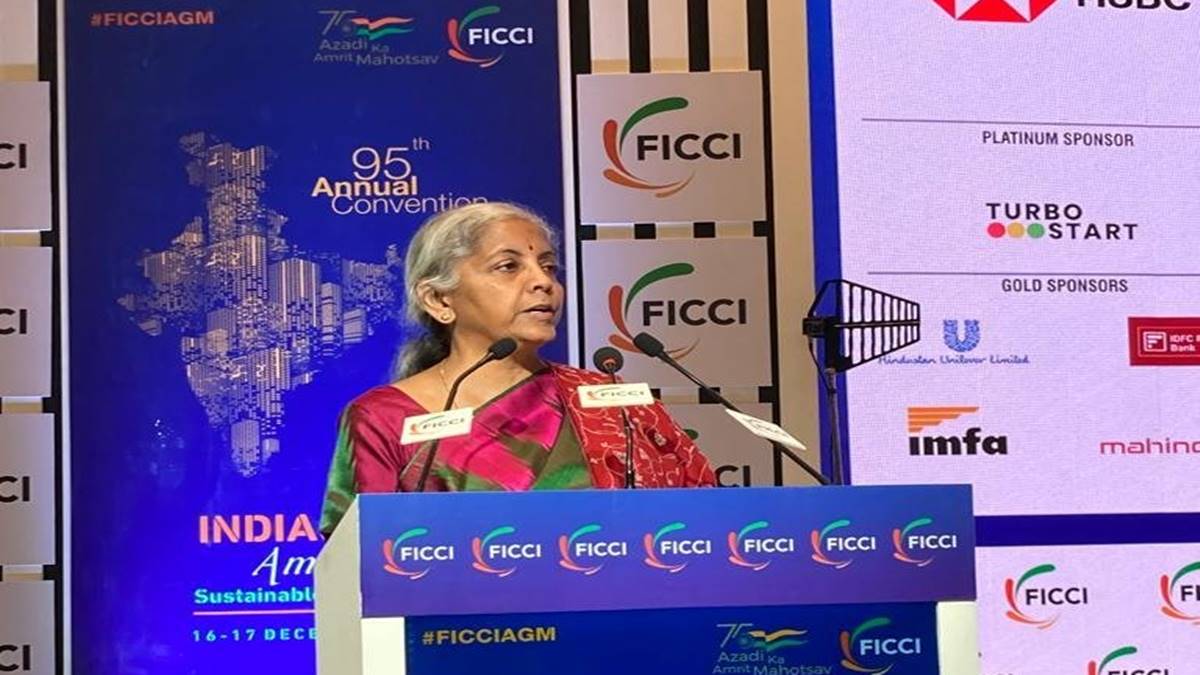17 Dec , 2022 By : Monika Singh

Finance minister Nirmala Sitharaman on Friday said the Budget for FY24 will follow the spirit of the earlier ones, in an indication that the government will likely retain its enhanced focus on capital spending as a credible growth lever. Sticking to the main policy plank of the earlier Budgets by the Modi 2.0 government also implies that the tax rates would remain benign, the fiscal consolidation road map will be diligently followed, and domestic manufacturing will be incentivised.
The Budget, the minister said, will also “set the template” for the next 25 years.
Speaking at a Ficci event, the minister warned of import tariff walls being erected on certain products (like steel) by some advanced economies that are undergoing green transition. She also cautioned about a suspected “long-drawn recession” in a large market like Europe and asked domestic industry to better prepare for such external headwinds.
“Many nations want to fund their green transition and are imposing tariff walls on products from other nations. If we export steel to such places, it is likely to face this tariff wall or tax for green transition. Indian industry needs to reset itself accordingly,” she said. Already, the UK and the EU have resorted to carbon border adjustment measures, which typically aim to tax imported goods, including steel and cement, from countries with less strict climate policies.
Given that private capex is yet to turn the corner meaningfully, there is a demand for extending, for a second time, the concessional corporation tax rate of 15% by one more year until March 2025 for newly incorporated manufacturing companies. The cut in the corporation tax rate, announced in 2019, failed to herald a virtuous cycle of an investment-led revival of the economy, in the wake of massive uncertainties caused by the pandemic.
Sitharaman said industry also needs to work out a strategy to attract firms in advanced nations, including in Europe, which may be scouting for locations to relocate their manufacturing base away from China. The government will also showcase India as an attractive investment destination during New Delhi’s presidency of the G20 grouping, she indicated.
As for the Budget’s focus on productive spending, in the aftermath of the pandemic, the central government raised its capex by as much as 27% on year in FY21, 39% (albeit including equity infusion into Air India Assets Holding) in FY22 and 27% (budgeted) in FY23 — way above the increase in overall Budget size of the relevant years. However, the pace of rise in FY24 is expected to be lower than in FY23, thanks to a high base and limited capacity of departments and other relevant agencies to spend the substantially-elevated amount year after year.
Nudging India Inc to further bolster manufacturing, Sitharaman also countered views that the country should not follow China’s model of manufacturing-led growth.
“If there are voices suggesting that India should not be focusing on manufacturing but it should focus only on services, I am sorry, no. We should be focusing on manufacturing and we should be focussing on newer areas of services,” she said.
Already, services account for about 60% of India’s gross domestic product, while the share of manufacturing has been languishing at 16-17% for decades.
For its part, the government has initiated a number of measures, including a sharp cut in the corporate tax rate for new manufacturing units, easier foreign direct investment rules and greater facilitation, to woo overseas investors. Given that India remains one of the world’s fastest-growing major economies, foreign investors can take advantage of its growth story, the minister had said earlier.
0 Comment